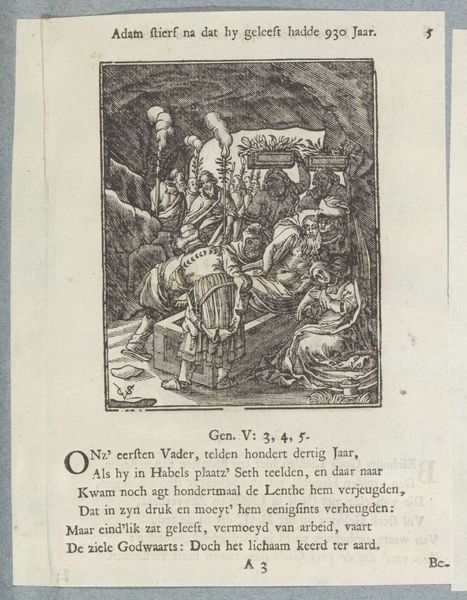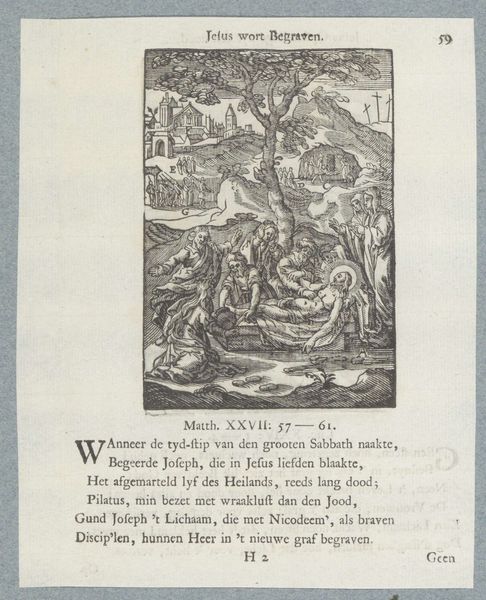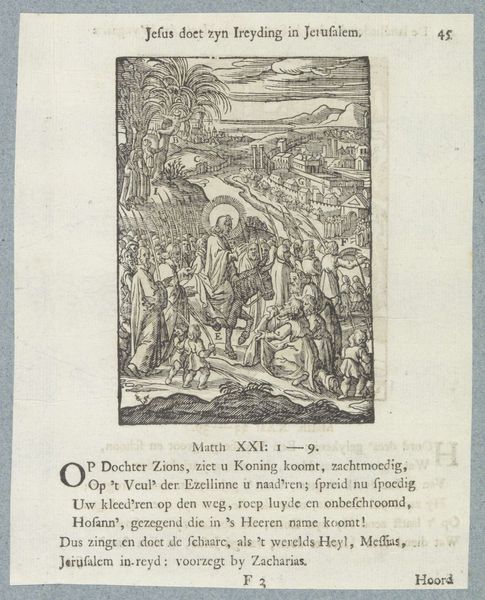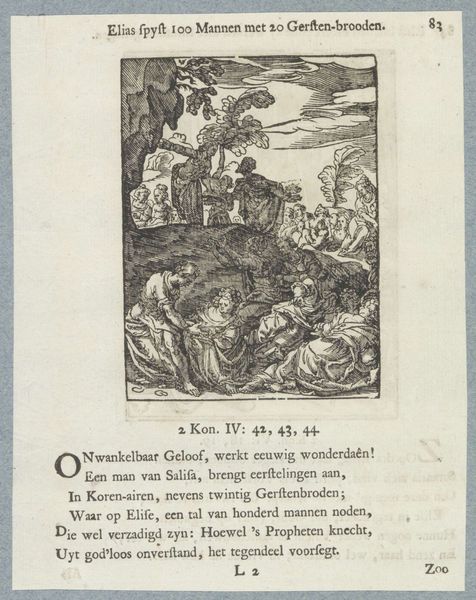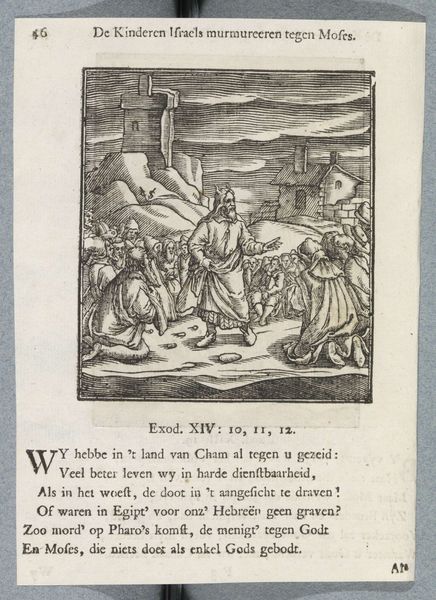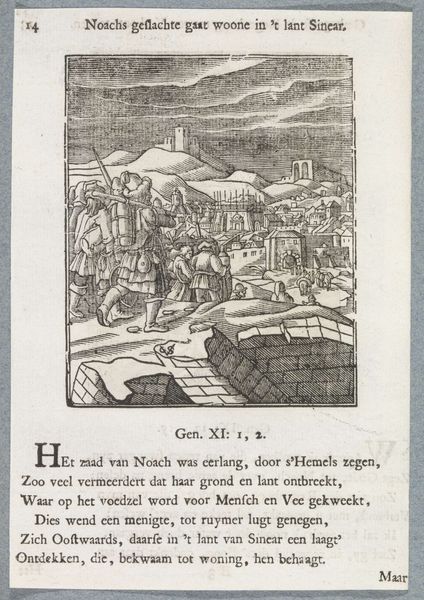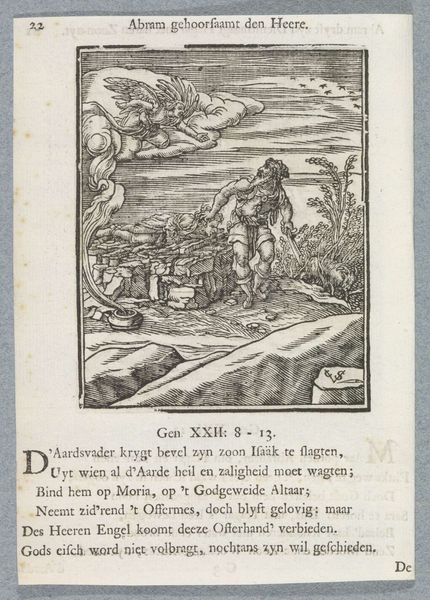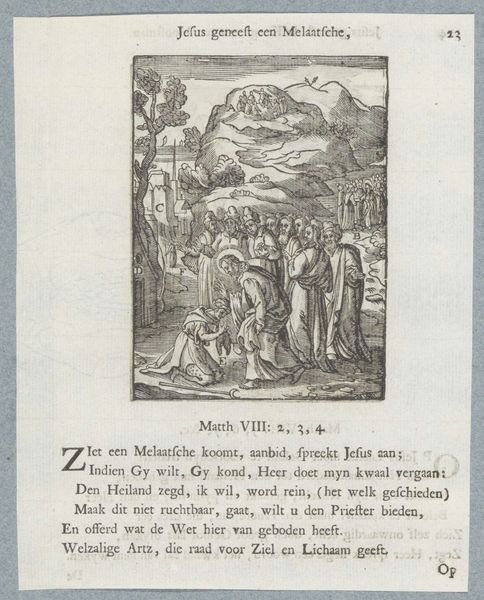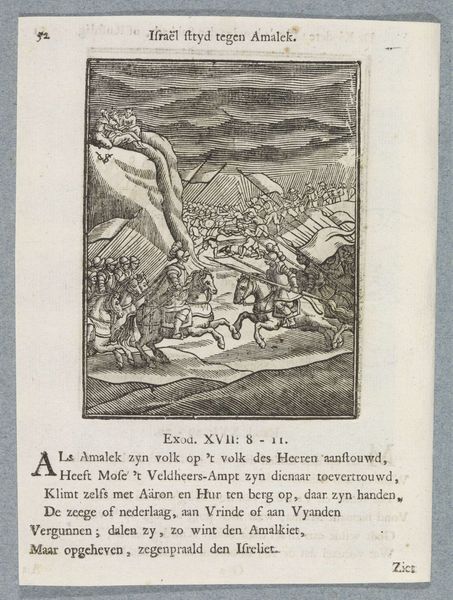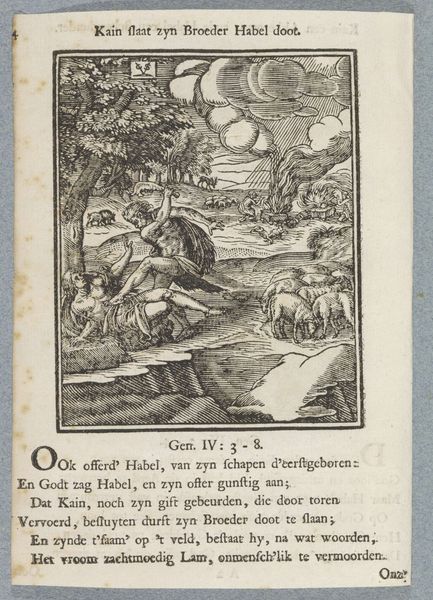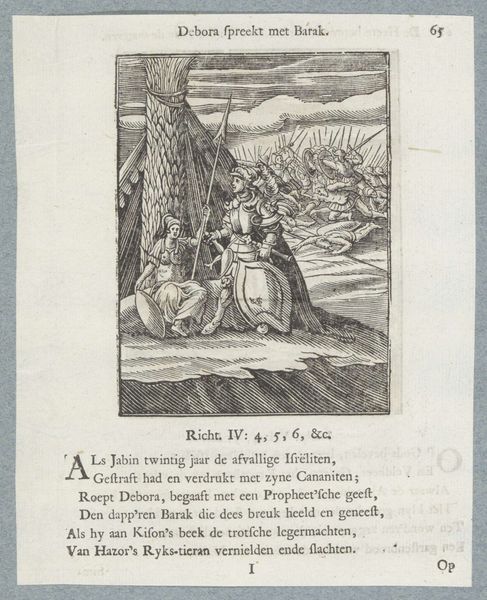
print, engraving
#
narrative-art
#
baroque
# print
#
figuration
#
line
#
engraving
Dimensions: height 109 mm, width 82 mm, height 169 mm, width 137 mm
Copyright: Rijks Museum: Open Domain
Curator: Let’s consider this intriguing engraving by Christoffel van Sichem II, entitled "Selectie van Gideons manschappen," dating approximately from 1645 to 1740. It's currently held in the collection of the Rijksmuseum. Editor: Immediately striking is the stark contrast and tightly packed composition, a kind of unsettling dynamism given the subject. What draws me in are the intricate lines. Curator: Yes, the artist’s focus on line work creates a narrative density. This piece illustrates a moment from the Book of Judges, where Gideon tests his troops at the water to identify the most alert and ready for battle. This biblical story speaks to the themes of divine selection and military strategy, but it also subtly engages ideas around faith, obedience, and power structures within the Old Testament context. Consider how interpretations of Gideon's story have shifted across various sociopolitical landscapes. Editor: True, it speaks of testing fidelity and readiness but also creates an image-space with great tonal contrast: The texture of the trees and musculature, the detailing on the armor, create layers of depth despite the lack of color, all held by that central figure holding what seems to be a spear and a very pronounced gaze toward the viewers. What could be the intentions or underlying motives within the line composition choices? Curator: Certainly, that focused gaze encourages viewers to confront their own roles in power dynamics, questioning obedience to higher authorities. Think of it as an examination of societal selection processes. The distribution of shadow and light plays upon contemporary societal understanding around divinely chosen people during war events or great displacement era, emphasizing themes of discernment in perilous circumstances, of divine will shaping outcomes during war times and conquest. The engraver used stark light, contrasting shadows as commentary on inherent bias. Editor: So, through the lines themselves, the image constructs not only depth but an assessment on the act of watching—that is an incredibly precise use of materials. What does it imply for art during war to emphasize looking so sharply? Curator: Well, such use might prompt considerations on media representations' capacity to legitimize/perpetuate conflict and narratives during periods defined war within sociopolitical domains or moments and environments framed historical accounts about conflict, therefore challenging notions prevalent. Editor: An artistic act to observe critically, even through old narrative tropes.
Comments
No comments
Be the first to comment and join the conversation on the ultimate creative platform.
